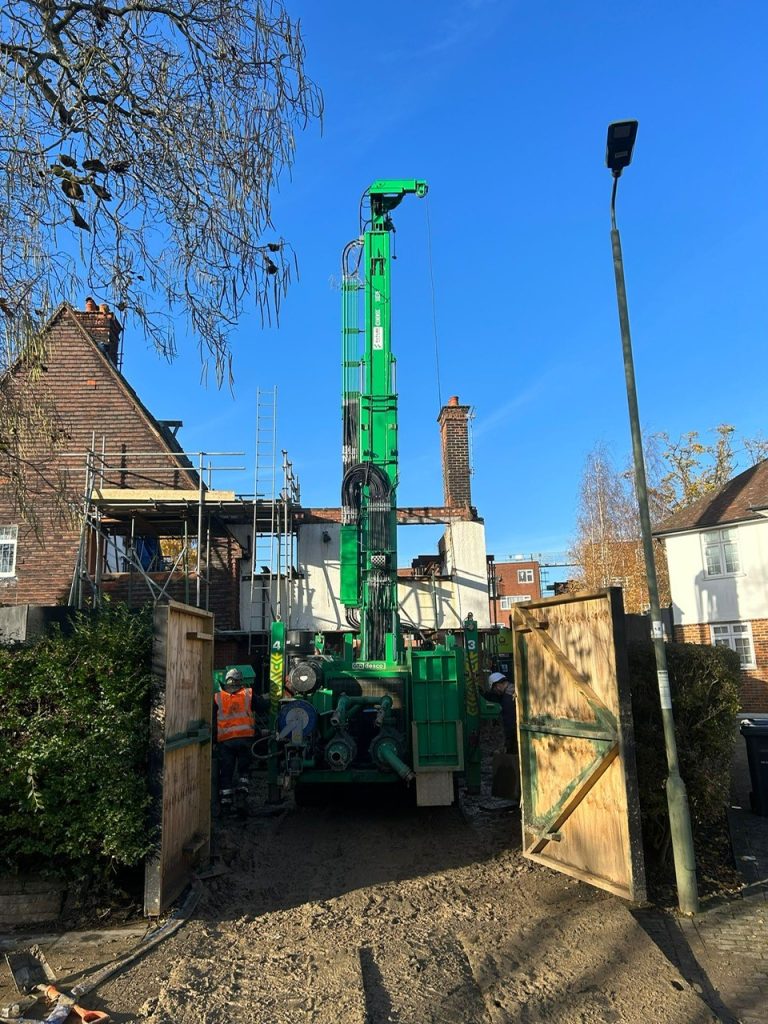Passive cooling is a great way to reduce overheating of properties in the summer and at the same time increase efficiency. In passive cooling, the heat pump compressor doesn’t come on and the running cost is therefore marginal.
What is passive cooling and how does it work?
Ground source heat pumps can do cooling in two ways: Active cooling and passive cooling. Passive cooling means that the heat transfer liquid in the ground collector, a water/glycol mix that we call brine, is heat exchanged against the heat transfer liquid in the central heating system. In active cooling, the compressor is running, and the flow of the brine is altered by valves to cool down a cooling buffer thank, rather than the ground.
Passive cooling can only work if the temperature of the brine is relatively low. This is normally the case for a borehole installation as the temperature is more constant deeper below the ground level. For horizontal ground collectors, normally buried 1.2 m below the ground level, the temperature of the brine will typically increase during the summer season as shallow ground heats up from the air. This increase will be higher with passive cooling as the system moves heat from inside the house to the ground. This is also the case for water source installations, especially if the collector is in still water. For these reasons, we normally don’t recommend passive cooling for systems with horizontal collector or water source, unless pool heating is part of the system (see below).
How is cooling distributed into the rooms?
Cooling can be distributed through the same pipework and emitters as used for heating distribution. A limiting factor, however, is the risk for condensation. Condensation happens when a cold surface is in contact with warmer air. It depends on the temperature of the cold surface and the humidity of the air.
For underfloor heating, our experience is that the heat transfer liquid can be down to around 17°C without causing condensation on the floor, irrespective of what the air humidity is.
For radiators, the corresponding temperature is around 20°C, which means that the cooling effect is very limited. For this reason, radiators are only rarely used for passive cooling.
Other ways of distributing cooling are with fan coil units and by a cooling cassette in a ventilation system. However, these systems need lower temperatures than you can get from passive cooling to provide meaningful cooling, so while it works well for active cooling, they are rarely used for passive cooling.
In some of our projects, we install ceiling panels with pipework like underfloor heating systems. Such panels are perfect for passive cooling, and they can be used for heating in the winter, increasing the heating distribution capacity which makes it possible to run the heat pump more efficiently.
What can I expect from passive cooling?
Passive cooling is not like air conditioning. It is a much softer way of cooling. Is it also called “comfort cooling”, as you don’t have cold air blown out. For a house with underfloor heating throughout, you can expect to achieve a few (3-5) degrees lower room temperatures than without cooling.
Passive cooling and pool heating
If the heat pump system provides pool heating as well as space heating and hot water, the benefits for passive cooling are even greater. Pool heating extracts heat from the ground collector and passive cooling adds heat. This makes both the pool heating and passive cooling more efficient. In a system including pool heating without passive cooling, the ground collector needs to be increased in size, which is usually not the case with passive cooling.
Increase efficiency going into the heating season
With passive cooling, heat is transferred from the property to the ground collector throughout the summer. This means that the soil surrounding the collector pipes has a higher temperature than the natural temperature once the heating season starts. Higher soil temperatures means higher brine temperatures which in turn increases efficiency of the heat pump during the heating season.
By Tomas Larsson









